-
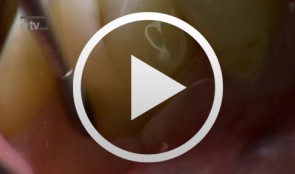

Regenerative Treatment of Class II Mandibular Furcation Defects
Heinz, BerndProcedure Case description: -Class II furcation defect at teeth 46 and 47 and gingival recessions at teeth 43 and 44 - Root planing using PerioSet - Incision technique - Cleaning furcation defect at tooth 46 - Pref Gel application, rinsing and Emdogain application - Insertion of Bio-Oss into the furcation space with an amalgam plugger after hydration - Condensation of the bone replacement material and application of an absorbable membrane (Bio-Gide) - Atraumatic suture closure using 6/0 Seralene Contents: This video demonstration shows the simultaneous treatment of recessions at teeth 43 and 44 and of class II furcation defects at teeth 46 and 47. After a brief case description, root planning is done using PerioSet. Next, an incision is made and the furcation defects are very carefully cleaned using hand instruments and ultrasonic scalers (Soniflex). The cleaned root surfaces and furcation defects are conditioned with Pref Gel (Straumann) for two minutes. The objective of conditioning is to remove the smear layer, to open the dentine tubules, and to enable surface demineralization. Moreover, this measure serves to optimize the contact between Emdogain and the root surface. After two minutes, the EDTA suspension is removed using physiological saline solution or water spray. Immediately afterwards, Emdogain is applied to the blood and saliva-free root surface. This procedure was also used to treat the furcation defect at tooth 47. Regenerative treatment of tooth 46 was performed since that tooth had a very extensive furcation defect. The defect was filled with Bio-Oss, which was applied using an amalgam plugger. Absorbable Bio-Gide was used for coverage of the furcation entrance. Finally, the wound was closed using loop sutures and single interrupted sutures. -
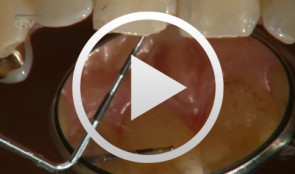

Incisal Edge Restoration and Repair
Frankenberger, RolandProcedure: Incisal Edge Restoration and Repair - Description of defect and problems related to its repair - Airborne particle abrasion and adhesive pretreatment - Biomimetic layering with enamel and dentine mass - Refining, production of halo effect, polishing Contents: The cervical fracture surface lies in the composite region of an underlying Black III cavity. In the past, this completely intact filling probably would have also been removed because of the fracture. Today, it is possible to treat the problem as a repair and leave the neighboring composite restoration in place while maintaining strict adherence to minimally invasive procedure. Even with the help of magnifying glasses, complete removal of the filling probably would have led to enlargement of the defect since the filling had been in place for 10 years. We therefore opted to pretreat the target area near the composite by means of intraoral airborne particle abrasion (Micro-Etcher system using 27 µm Al2O3 powder) before applying phosphoric acid to the enamel and dentine for conventional conditioning. This was followed by the bonding procedure, comprising the application of dentine adhesive to enamel, dentine and the aged composite material. This technique has already been described in the recent literature (Frankenberger et al. Am J Dentistry, 2003). The reconstruction was performed using an enamel and dental mass of esthetic composite material with the help of a silicone key positioned palatinally. This makes it possible to achieve a biomimetic and natural restoration, including a halo effect. Last photograph: Next recall. -
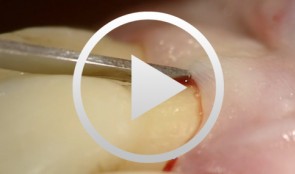

Flap designs for Interdental Tissue Preservation in Periodontal Therapy
Salvi, Giovanni E.Procedure: - Introduction: History -Taking, Examination, Diagnosis, Etiology, Prognosis for Individual Teeth - Four - Phase Treatment Sequence - Modified Papilla Preservation Technique(MPPT) - Simplified Papilla Preservation Technique (SPPT) - Findings 6 months after Surgery Synopsis The Modified and Simplified Papilla Preservation Techniques for conservation of interproximal papillary tissue were designed to provide access to deep and narrow bony defects to enable regenerative periodontal treatment. The Modified Papilla Preservation Technique (MPPT) was designed to ensure tension-free primary closure via barrier membranes in patients with small interdental spaces. The Simplified Papilla Preservation Technique(SPPT) is used to gain access to narrow interdental spaces ( < 2mm) and to deep defects in the lateral tooth region. Apart from preserving primary wound closure in the interdental space, the two techniques also serve to keep the membrane from collapsing into the bony defect. Both MPPT and SPPT employ special suture techniques to ensure tension-free primary closure of the interdental space. This video clip also serves to demonstrate that the two techniques of interproximal tissue preservation can also be used for periodontal interventions without regenerative measures. -
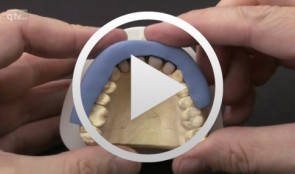

-
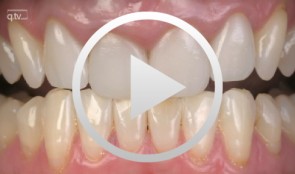

Immediate placement and all-ceramic restoration in the anterior maxilla - a customized interdisciplinary treatment approach - Clinical procedure
Happe, ArndtContents: - Patient presentation and esthetic analysis - Careful extraction of a non-salvageable tooth - Miniplast splint as a surgical template - Harvesting bone from the implant bed - Placing a CONELOG® implant at site 11 - Obtaining a corticospongeous bone cylinder at site 48 - Alveolar augmentation and reconstruction of the buccal bone lamella - Harvesting a connective-tissue graft - Tunneling the vestibular mucosa, various suturing techniques - Insertion of the provisional restorations - 3 months later: Preparing, impression and arbitrary transfer with a bite fork and facebow, temporary restoration - Master cast, new wax-up, determine the emergence profile - Fabricating a hybrid abutment, Scanning the custom abutment, on-screen crown design - Fabricating a zirconia abutment and a feldspathic ceramic veneer - Conditioning and adhesive attachment of the components, final intraoral check - Try in and adhesive cementation -


Innovative CAD/CAM treatment approaches for implant-supported fixed restorations
Beuer, Florian / Stimmelmayr, Michael / Schweiger, JosefContents: - Patient presentation - Preparing the implant bed, implant placement, checking implant positions - Securing the insertion posts to the index for fabrication of the cast - Suturing details - Delivery of the adapted long-term provisional - Fabricating the cast and the gingival mask, transferring the pontic emergence profiles to the gingival mask, mask adaptation - The master cast under the strip scanner with scan bodies on the laboratory analogs - CAD crown design and virtual anatomic shaping - CAM fabrication of a zirconia abutment - Adhesively connecting the zirconia abutment to the titanium base - Reentry, split-thickness flap, vestibuloplasty, connecting the zirconia abutments to the implants - Mucosal graft to restore a soft-tissue defect - Intraoral impression of the abutments - Fabricating the definitive lithium disilicate crowns: virtual crown design; CAM milling, characterization of the crowns - Delivery, final adjustments, presentation of the treatment outcome -
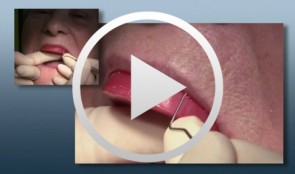

Implant-supported removable restorations in the edentulous jaw
Wolfart, Stefan / Weber, VolkerContents: - Patient presentation, impression, comprehensive jaw relation records - Wax-up, Fabrication of the provisional restoration - Fabrication of a DVT based planning and drilling template - Surgical procedures for inserting four implants in the mandible - Suturing and relining of the existing denture as a provisional restoration - After 12 weeks: Reentry and insertion of healing abutments - Harvesting a free gingiva graft to extend the attached gingiva - Verifying implant stability using Periotest - Reworking the existing denture to fit on the healing abutments - Impressioning with custom tray (pick-up technique) - Demonstrating the line finder to transfer face axis - Fabricating the three restorations with Locator® attachments, electroplated double crown, precision-milled bar - The matrix and retention parts of the Locator® system, transferring the Locator® abutments to the implants - Fabricating the electroplated copings, intraoral adhesively connecting the electroplated copings to the cast framework (passive fit), finishing and delivery - Removable restoration on a custom-milled bar, clinical and laboratory workflow, delivery - Maintaining implant-supported restorations -
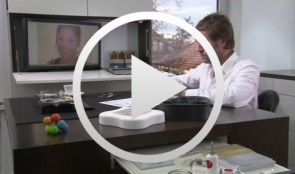

Immediate placement and all-ceramic restoration in the anterior maxilla - a customized interdisciplinary treatment approach
Happe, Arndt / Nolte, AndreasContents: - Patient presentation and esthetic analysis - Careful extraction of a non-salvageable tooth - Miniplast splint as a surgical template - Harvesting bone from the implant bed - Placing a CONELOG® implant at site 11 - Obtaining a corticospongeous bone cylinder at site 48 - Alveolar augmentation and reconstruction of the buccal bone lamella - Harvesting a connective-tissue graft - Tunneling the vestibular mucosa, various suturing techniques - Insertion of the provisional restorations - 3 months later: Preparing, impression and arbitrary transfer with a bite fork and facebow, temporary restoration - Master cast, new wax-up, determine the emergence profile - Fabricating a hybrid abutment, Scanning the custom abutment, on-screen crown design - Fabricating a zirconia abutment and a feldspathic ceramic veneer - Conditioning and adhesive attachment of the components, final intraoral check - Try in and adhesive cementation -
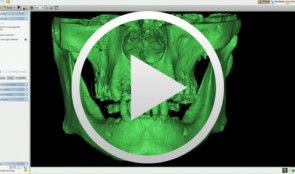

3D planning and template-guided implant insertion in the partially edentulous jaw
Kirsch, Axel / Ackermann, Karl-Ludwig / Neuendorff, GerhardContents: - Planning and preparing a transfer stent - Introduction to on-screen 3D planning - CAD-designed transfer stent - Integrating the CAMLOG® Guide guiding sleeves - Fabricating a therapeutic restoration - Positioning the lab analogs on the master cast using the transfer stent - Titanium bridge frameworks for the temporary restoration - Surgical procedures: implant placement with the transfer template - Hydrocolloid impression taking and bite registration - Temporary insertion of the therapeutic provisional, demonstrating of a passive fit - Definitive CAMLOG abutments - Scanning the abutments, designing the crowns on-screen, machine driven milling of the zirconia crowns, veneering - Preparation for the delivery of the definitive restoration - Connecting the abutments, checking the torque, cementing the crowns, functional checks - Evaluating the completed restoration and assessing the teamwork of the dentist and dental technician -
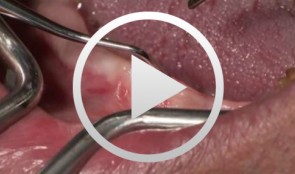

3D planning and template-guided implant insertion in the edentulous jaw
Kirsch, Axel / Ackermann, Karl-Ludwig / Neuendorff, GerhardContents: - Surgical procedures for anchoring a diagnostic guide - Inserting four provisional implants - Impression and bite registration, fabrication of the master cast - Tooth-setup for the temporary restoration - Registering the setup in a silicone index - Duplicating the setup in radiopaque resin for CT imaging - Implant planning using a 3D record of the CT image - Fabricating a transfer template based on the CAD treatment plan using the CAMLOG® Guide System - Inserting the guiding sleeves into the template - Fabricating the final restoration prior to inserting the implants - Vario SR abutments with Vario SR titanium copings for a passive fit - Fabricating a cast titanium framework to reinforce the restoration - Surgical procedures demonstrating the definitive implant insertion - Insertion of six implants for immediate loading - Providing a controlled-clearance fit between the implants and the denture base










